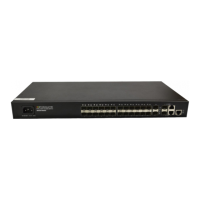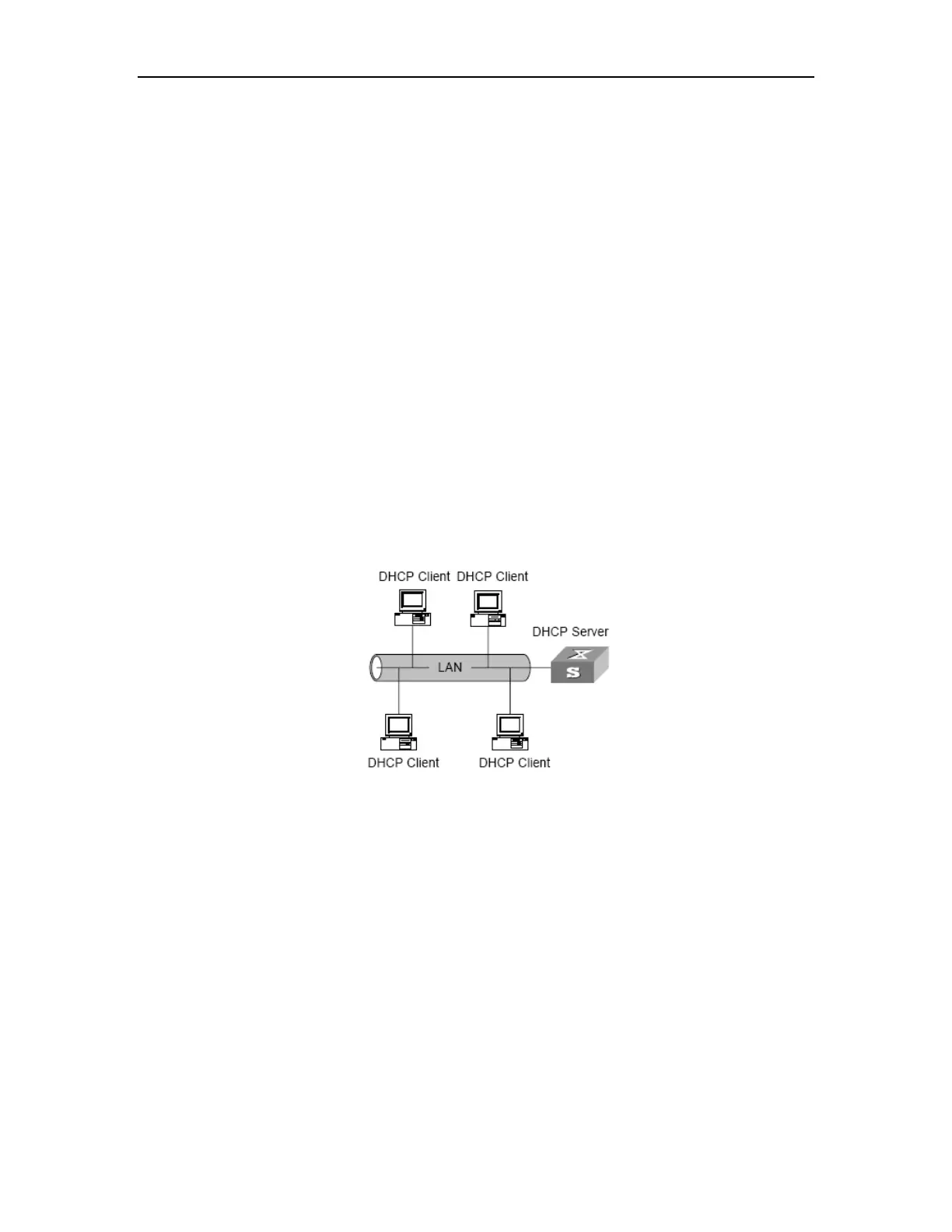DHCP Configuration
Chapter 15. DHCP Configuration
15.1 DHCP Overview
With networks getting larger in size and more complicated in structure, lack of available IP
addresses becomes the common situation the network administrators have to face, and
network configuration becomes a tough task for the network administrators. With the
emerging of wireless networks and the using of laptops, the position change of hosts and
frequent change of IP addresses also require new technology. Dynamic host configuration
protocol (DHCP) is developed in this background.
DHCP adopts a client/server model, where DHCP clients send requests to DHCP servers
for configuration parameters; and the DHCP servers return the corresponding configuration
information such as IP addresses to configure IP addresses dynamically. A typical DHCP
application includes one DHCP server and multiple clients (such as PCs and laptops), as
shown in Picture 1-1.
Figure 15-1 Typical DHCP application
15.2 DHCP IP Address Assignment
15.2.1 IP Address Assignment Policy
Currently, DHCP provides the following three IP address assignment policies to meet the
requirements of different clients:
Manual assignment. The administrator statically binds IP addresses to few clients with
special uses (such as WWW server). Then the DHCP server assigns these fixed IP
addresses to the clients.
Automatic assignment. The DHCP server assigns IP addresses to DHCP clients. The IP

